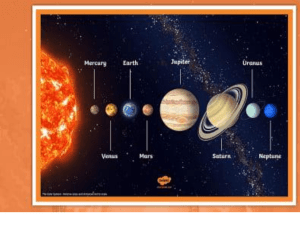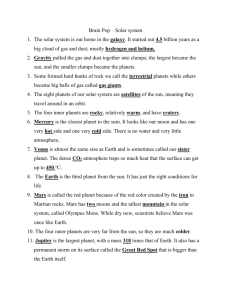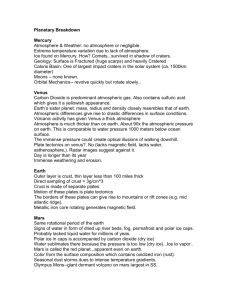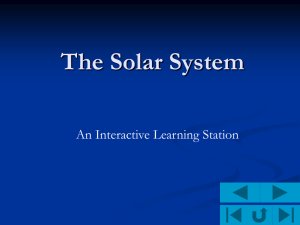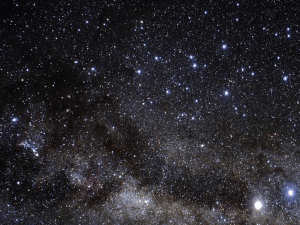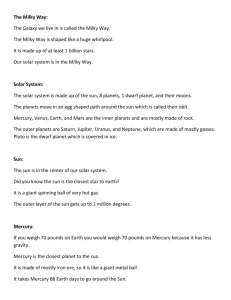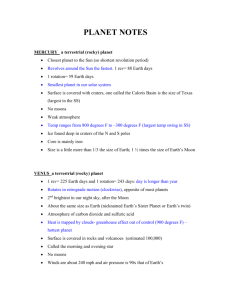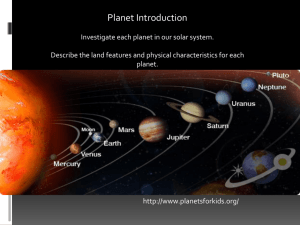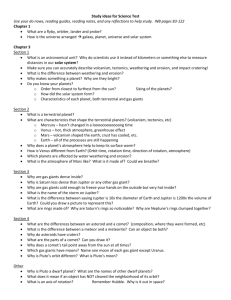The Outer Planets
advertisement
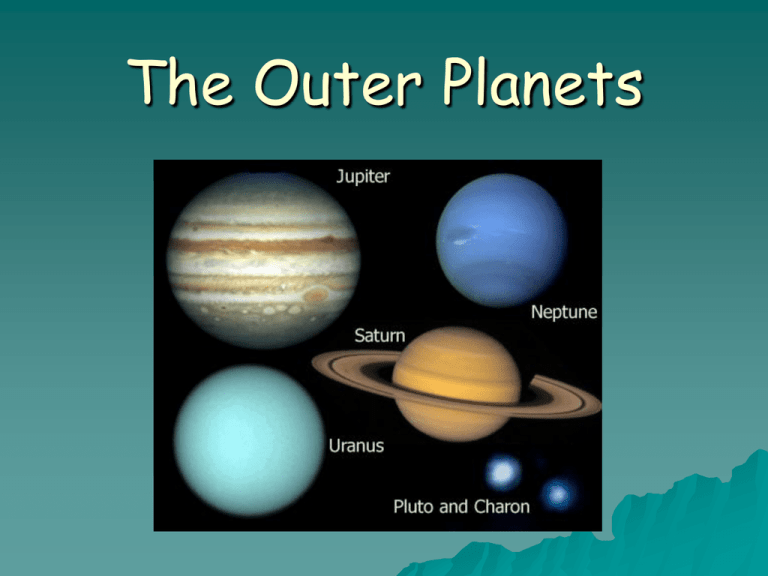
The Outer Planets Most of the Outer planets are: Large, Gas Giants except Pluto The Gas Giants…..and the Inner planets Jupiter Largest Planet Atmosphere: Hydrogen and Helium 16 Moons – (4 Large Moons) (Ganymede, Europa, Callisto, Io ) Great Red Spot (Huge Storm) Space Probes: Voyager-Galileo Thin ring system Day: 10 hrs Year: 12 Years Jupiter Saturn 2nd Largest Planet Large ring system-ice, rock, dust About 18 Moons (18-21) Space Probe: Voyager-Cassini Atmosphere: Hydrogen, Helium Titan: Moon with an Atmosphere Day: 10 hours Year: 29.5 years Saturn Uranus About the size of Neptune Discovered by William Herschel 1781 Atmosphere: hydrogen, helium methane About 15 Moons Thin ring system Rotates on its side Rocky core Voyager space probe Day: 18 hours Year: 84 years Uranus Neptune A little smaller than Uranus Methane atmosphere Last planet seen by Voyager Rocky core 8 Moons (Triton) Thin ring system Great dark spot Day: 19 hours Year: 165 years Neptune Pluto “Dwarf” Planet Icy/rocky Planetoid 1 Moon-Charon (“double planet”) Thin atmosphere-frozen gases Space probe: New Horizon 2015 Pluto is one of many “Planetoids” Day: About 6 Earth days Year: 248 Earth Years (tilted orbit) Pluto

